Main menu
Common skin conditions

NEWS
Join DermNet PRO
Read more
Quick links
Author: Naomi Ashman, Dermoscopist, Torbay Skin, Auckland, New Zealand. DermNet Editor in Chief Adjunct A/Prof Amanda Oakley, Dermatologist, Hamilton, New Zealand. November 2019.
Introduction Clinical features under dermatoscope Polarised and non-polarised light Lesions visible Histological explanation
In dermoscopy, perpendicular white lines are short discrete white lines oriented parallel and orthogonal (perpendicular) to each other and seen only under polarised light [1]. They are also known as polarising white lines, short white lines, shiny white lines, shiny white streaks, chrysalis, chrysalids, and crystalline structures. Perpendicular white lines are a clue to a specific diagnosis including basal cell carcinoma (BCC) and some melanomas [2].
Perpendicular white lines are only seen under polarised light. They appear as short, shiny white lines and move as the dermoscopy lens is moved at different angles over the lesion.
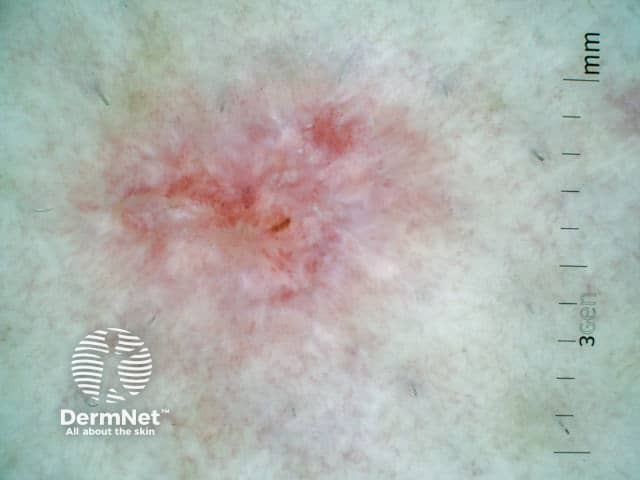
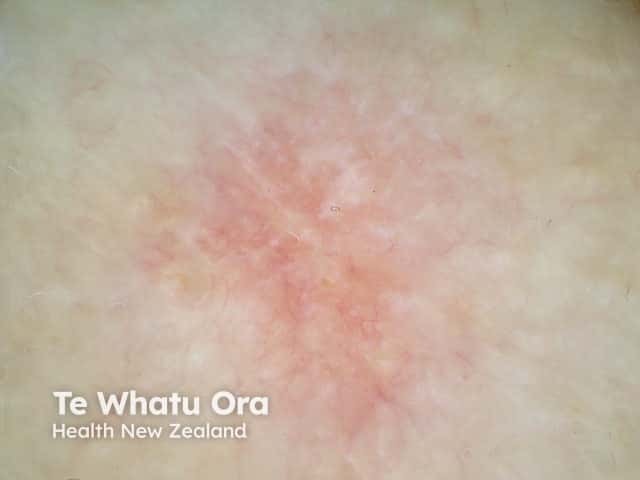
Superficial basal cell carcinoma dermoscopy
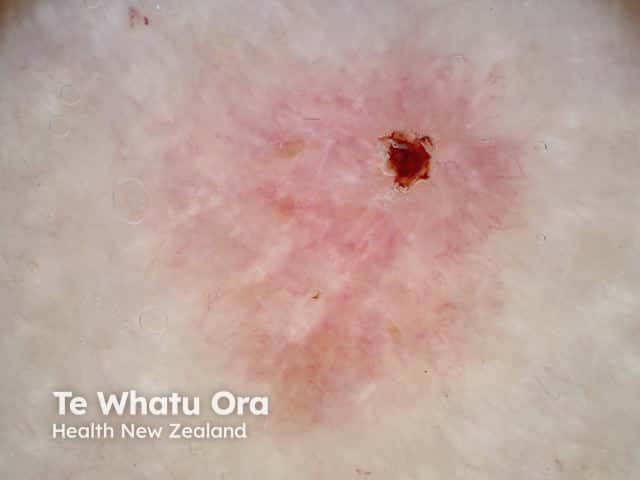
Superficial basal cell carcinoma dermoscopy
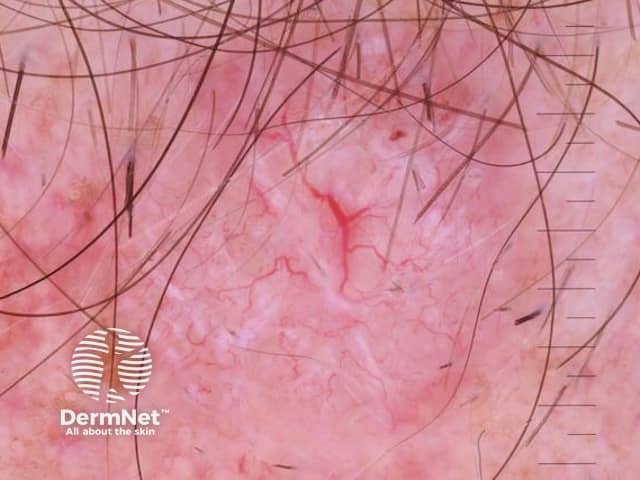
Nodular basal cell carcinoma dermoscopy
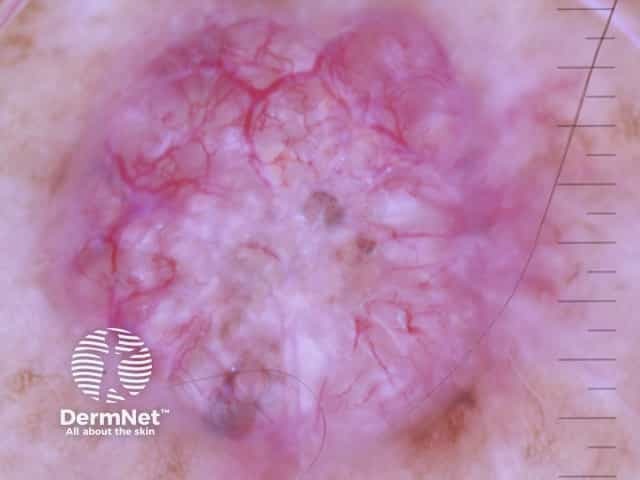

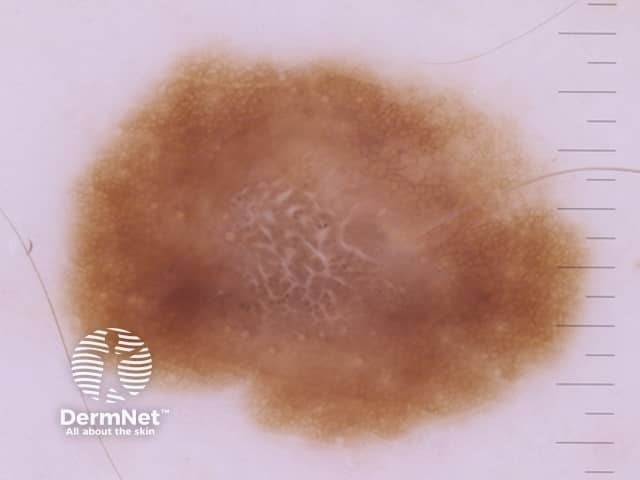
Melanoma in situ dermoscopy
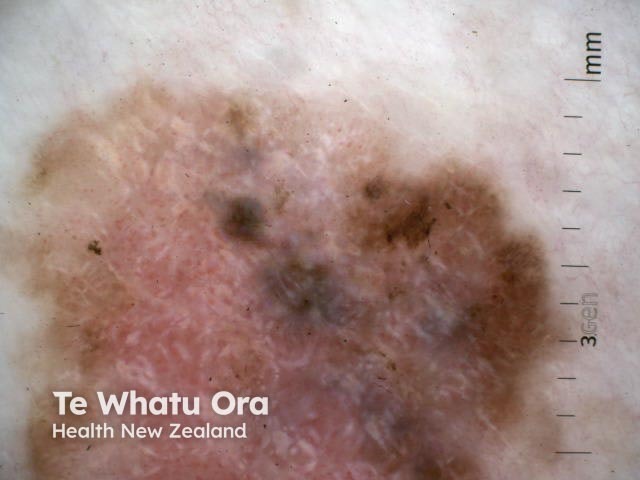
Melanoma in situ dermoscopy

A nodular melanoma arising within a superficial spreading melanoma
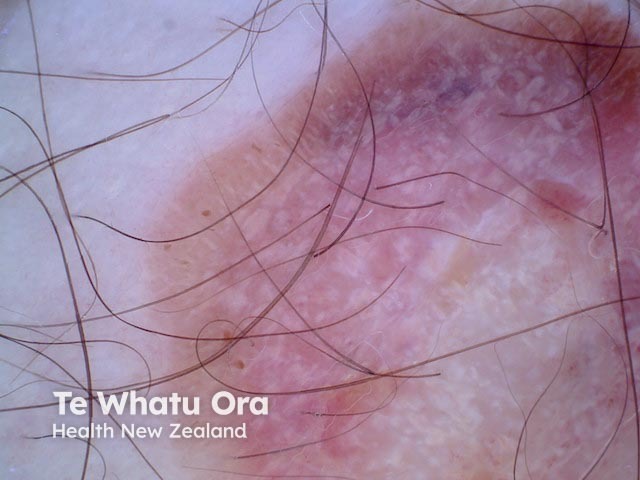
Amelanotic nodular melanoma
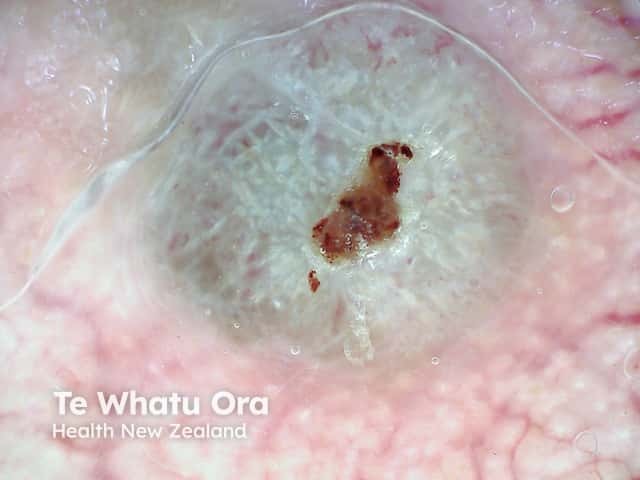
Nodular melanoma, Breslow 6.8 mm

Nodular melanoma, Breslow 2.5 mm, polarised dermoscopy view
The following pairs of images demonstrate the differences seen in dermoscopy of perpendicular white lines under polarised and nonpolarised light.
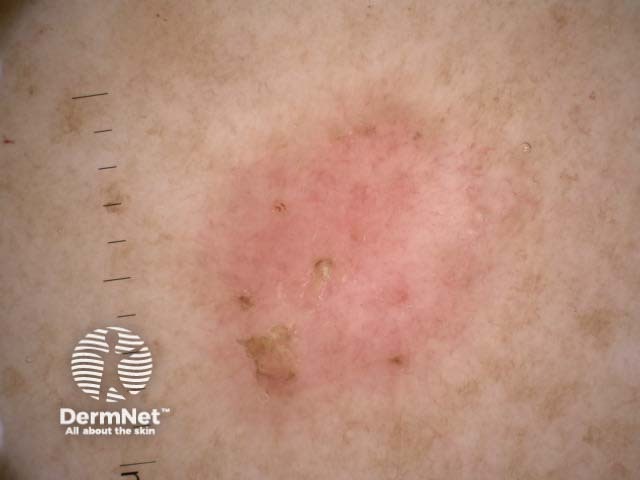

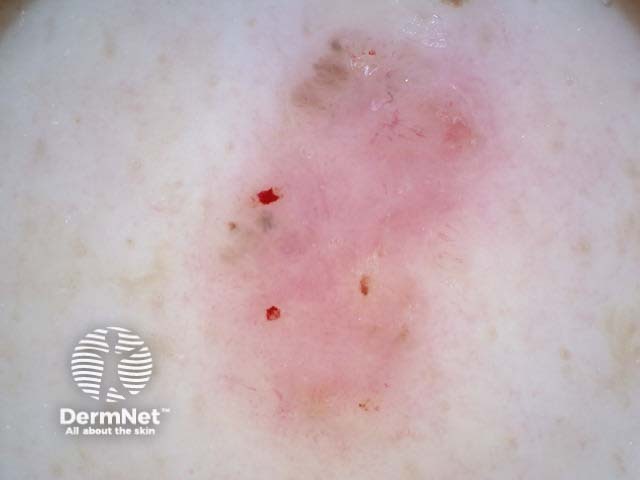
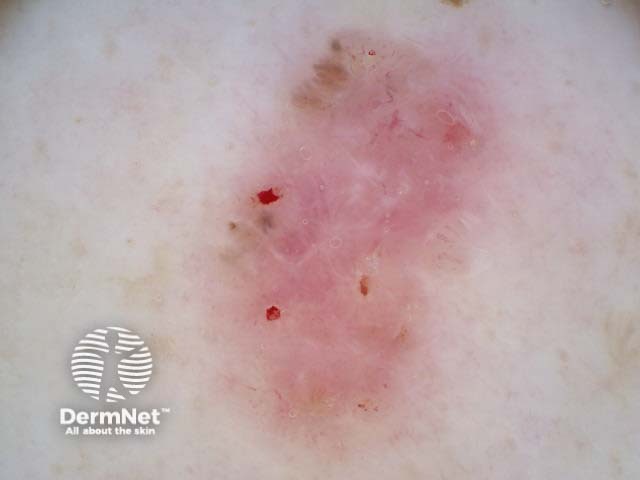
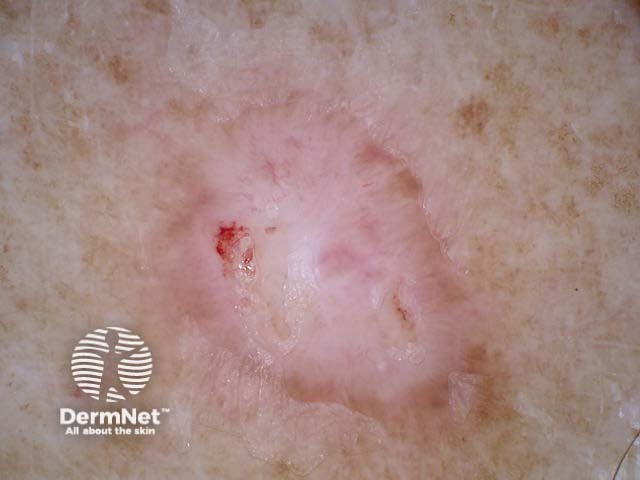
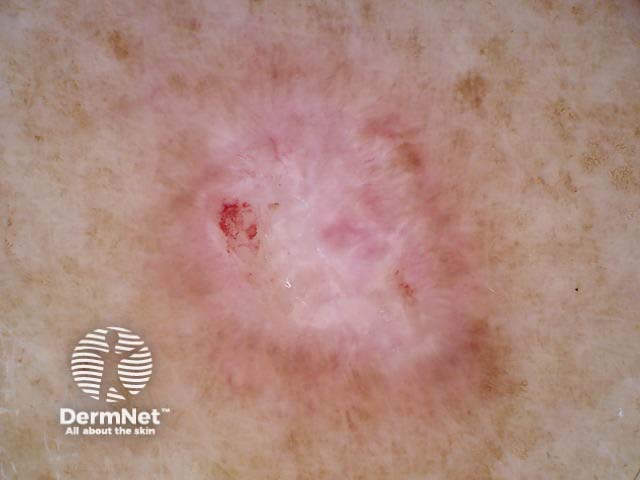
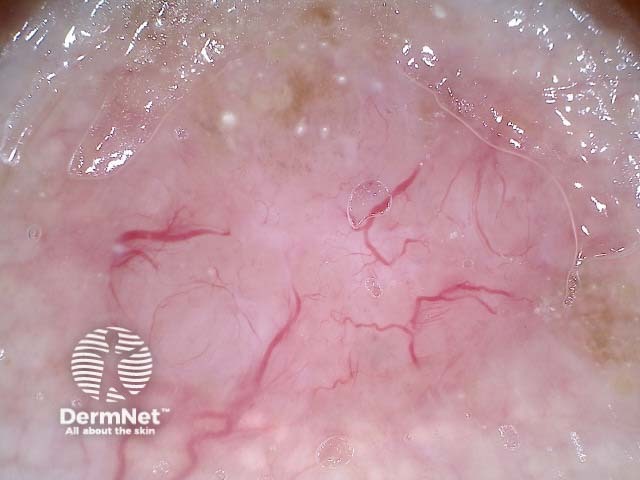

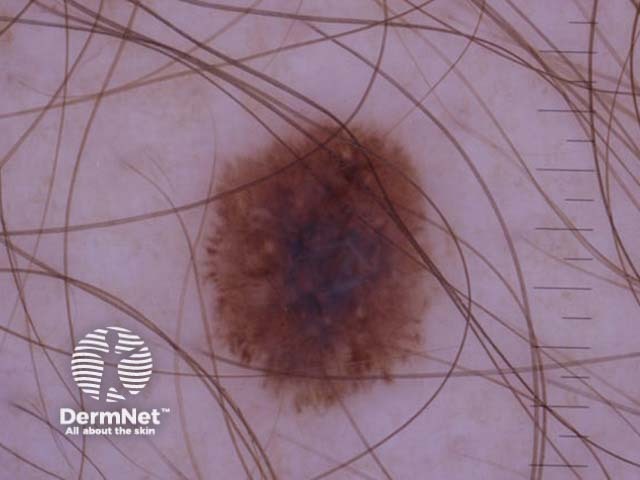
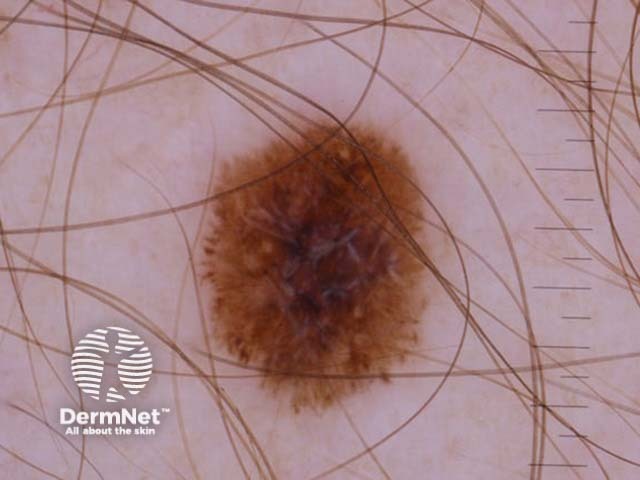
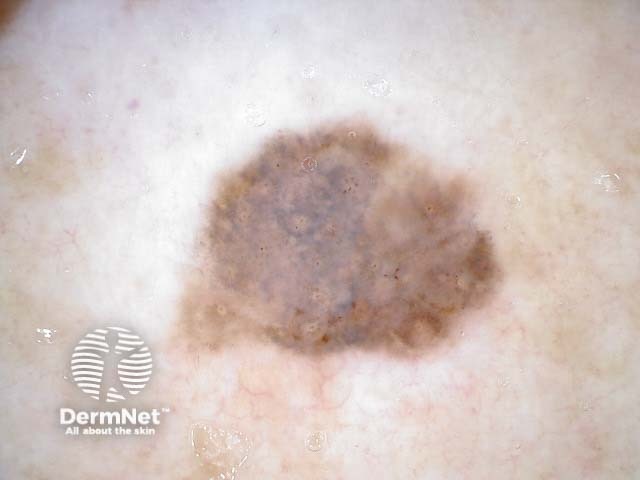
Melanoma in situ, nonpolarised dermoscopy view
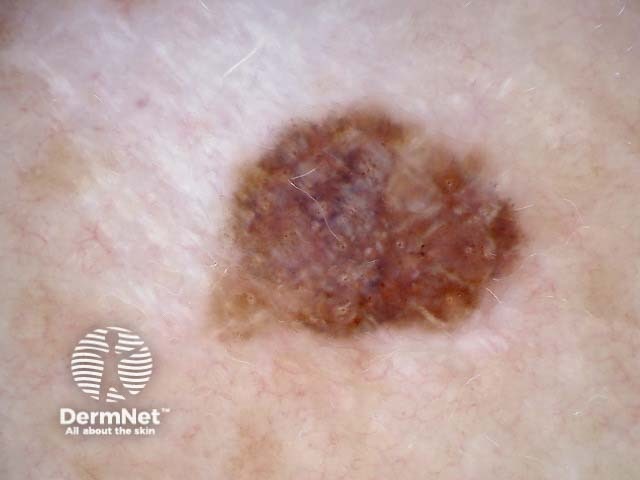
Melanoma in situ, polarised dermoscopy view

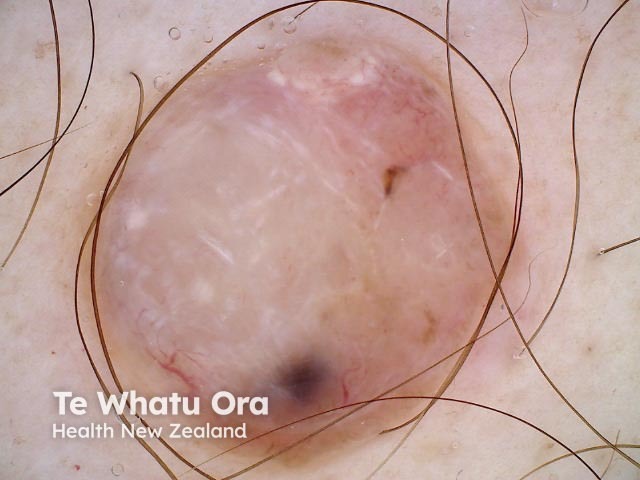
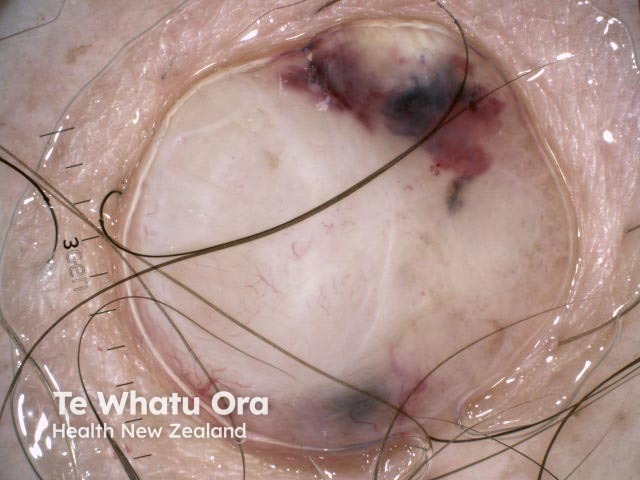
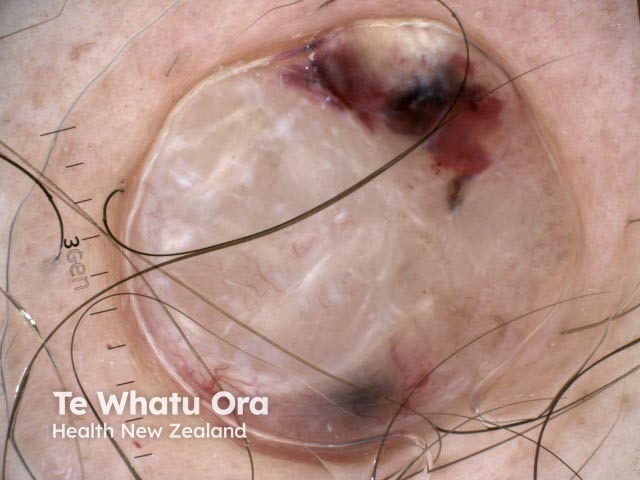


Perpendicular white lines can be seen in the following lesions:
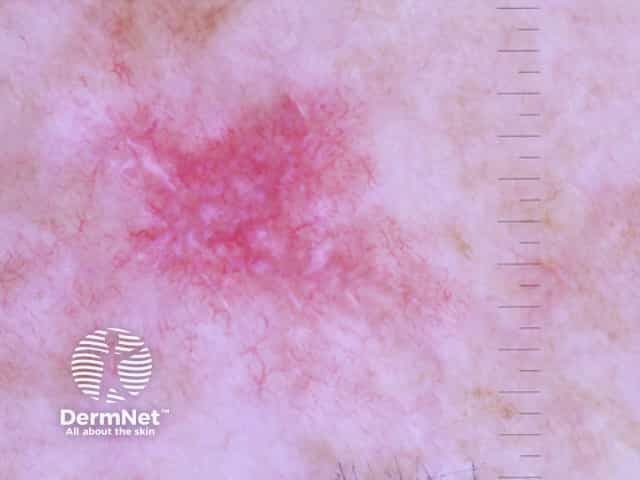
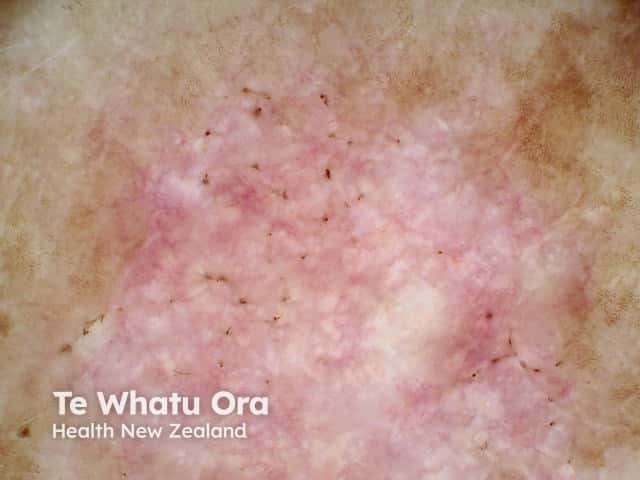
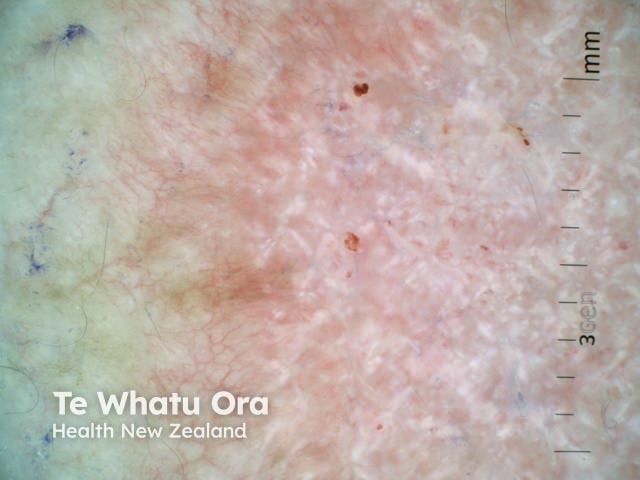
Superficial basal cell carcinoma dermoscopy
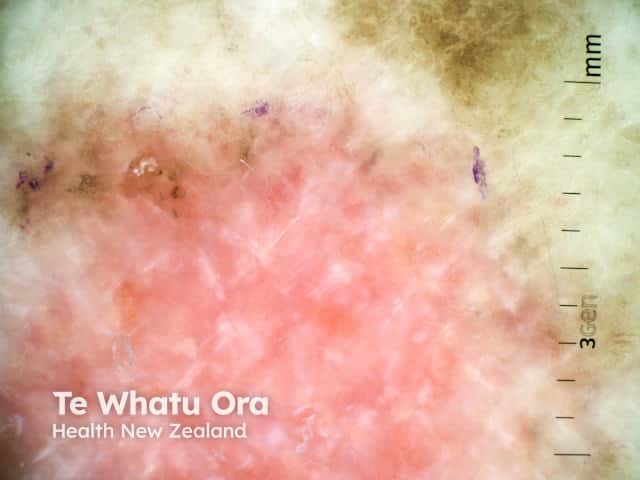
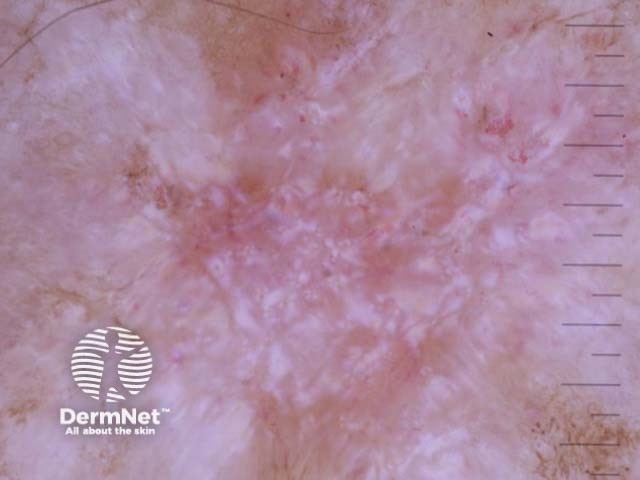
Nodular basal cell carcinoma dermoscopy

Polarised dermoscopy of a nodular basal cell carcinoma presenting as an exophytic polyp
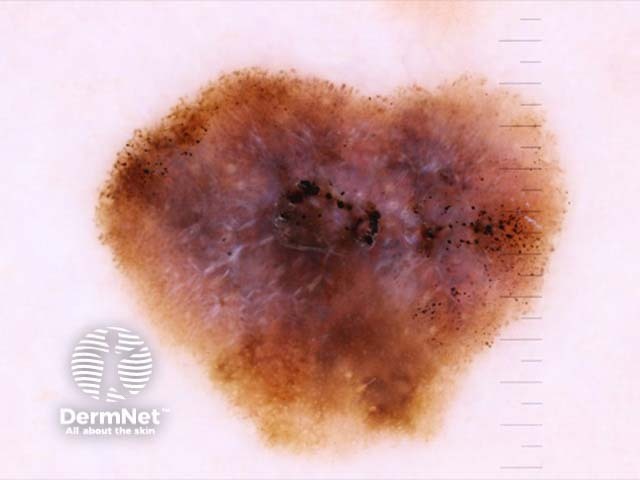
Invasive melanoma dermoscopy, Breslow 0.4mm within a melanoma in situ, with associated naevus present
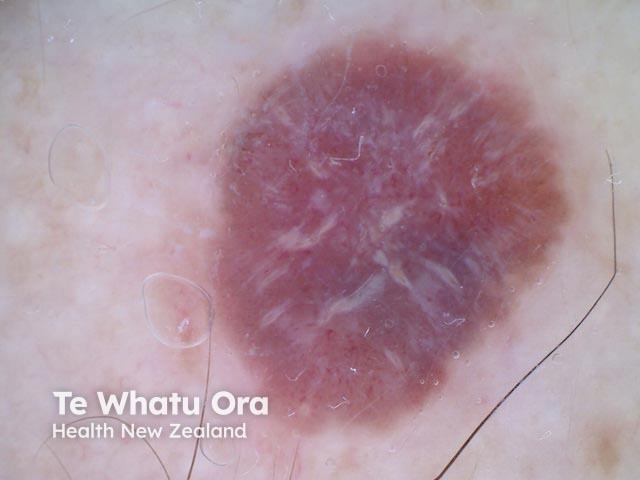
Amelanotic melanoma dermoscopy

Amelanotic melanoma dermoscopy

Spitz naevus dermoscopy

Dermatofibroma dermoscopy
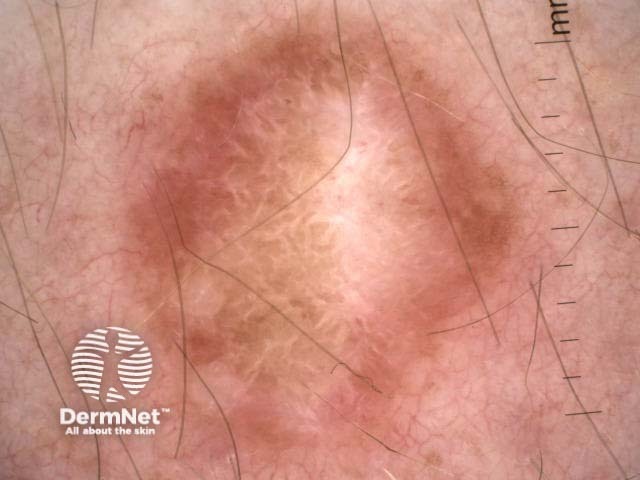
Dermatofibroma dermoscopy
Perpendicular white lines are thought to correlate histopathologically with altered collagen in the dermis (fibrosis). The birefringent properties of collagen bundles cause rapid randomisation of polarised light. This is the reason collagen appears bright white and is more conspicuous under polarised dermoscopy [3].
They also correlate with dermal invasion in cases of melanoma [4]. However, as our illustrations show, they may also be seen in melanoma in situ.